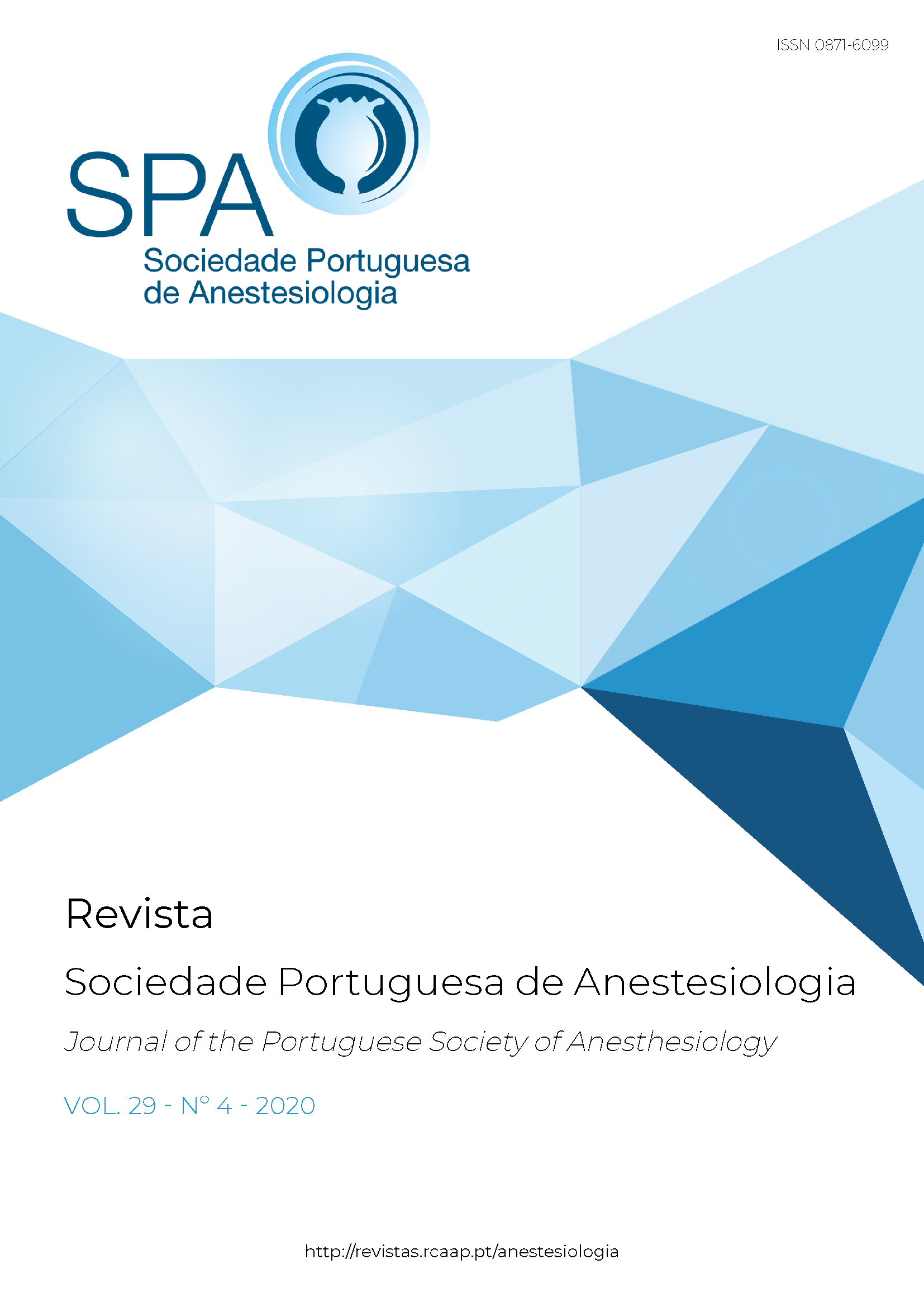Patient Satisfaction in Ambulatory Surgery: Spinal vs General Anaesthesia for Lower Limb Varicose Vein Stripping
DOI:
https://doi.org/10.25751/rspa.19251Keywords:
Patient Satisfaction, Spinal Anaesthesia, General Anaesthesia, Lower Limb Varicose Vein Stripping, Ambulatory SurgeryAbstract
Introduction: Lower limb varicose vein stripping is a common procedure performed in day surgery units. Spinal (SA) or general anaesthesia (GA) can be used. We aim to evaluate if there are differences in patient satisfaction between these two types of anaesthesia.
Material and Methods: This is an observational prospective study. From December 2018 to January 2019, patients submitted to lower limb varicose vein ambulatory surgery in our centre were asked to answer “The Heidelberg Peri-anaesthetic Questionnaire”. Data was submitted to statistical analysis.
Results: Ninety-two patients answered the questionnaire. GA was used in 60% of cases and SA in 40%. Twenty-nine percent of patients were older than 60 years and 59% were female. Most patients were married (52%) and 65% had completed at least 9th grade. SA scored worse satisfaction in 5 items: fear of anaesthesia (2.91 vs 2.33; p=0.02) and fear of surgery played an important role (3.15 vs 2.48; p<0.01); prior to the procedure fear to the point of losing control was felt (2.45 vs 2.02; p=0.02); in general fear or agitation played an important role prior to anaesthesia (2.73 vs 2.15; p=0.01); pain when giving anaesthesia caused stress (2.91 vs 2.02; p<0.01). There were no statistical differences in satisfaction in the prior items according to gender, age>60 years, marital status or scholarship>9th grade.
Discussion: Spinal anaesthesia seems to cause a greater feeling of fear and anxiety.
Conclusions: Patients submitted to spinal anaesthesia for lower limb varicose vein stripping should be better reassured concerning anaesthesia and surgery.
Downloads
Downloads
Published
How to Cite
Issue
Section
License
Articles are freely available to be read, downloaded and shared from the time of publication.
The RSPA reserves the right to commercialize the article as an integral part of the journal (in the preparation of reprints, for example). The author should accompany the submission letter with a declaration of copyright transfer for commercial purposes.
Articles are published under the terms of the Creative Commons Attribution Non-Commercial License (CC BY-NC).
After publication in RSPA, authors are allowed to make their articles available in repositories of their home institutions, as long as they always mention where they were published.


